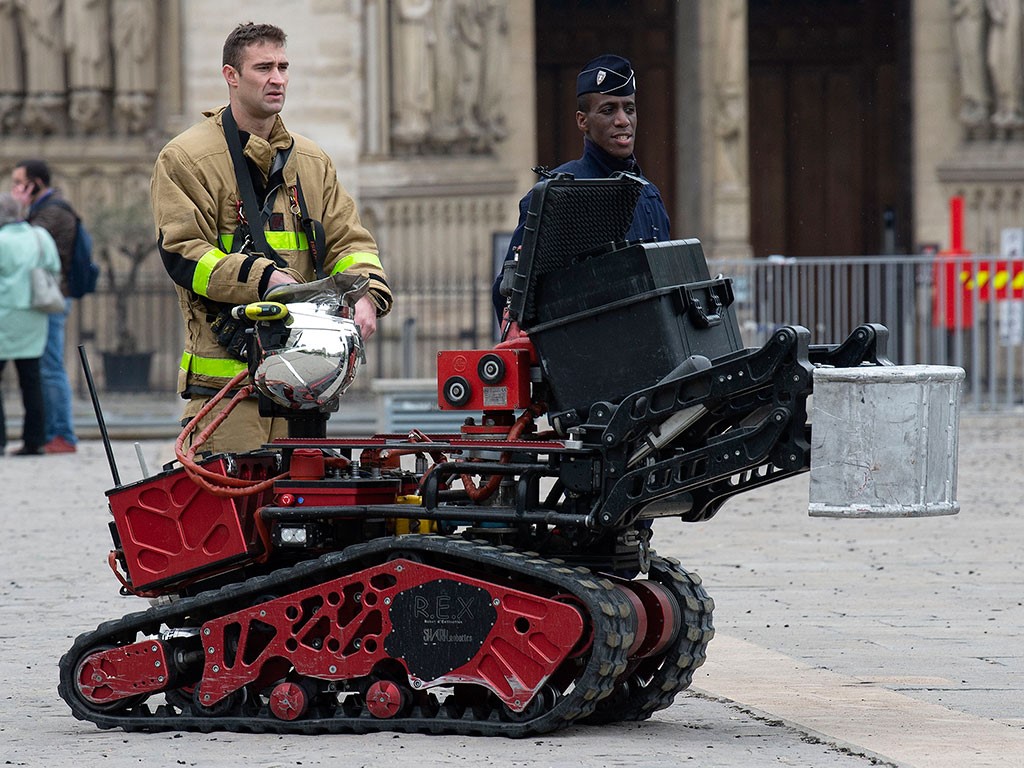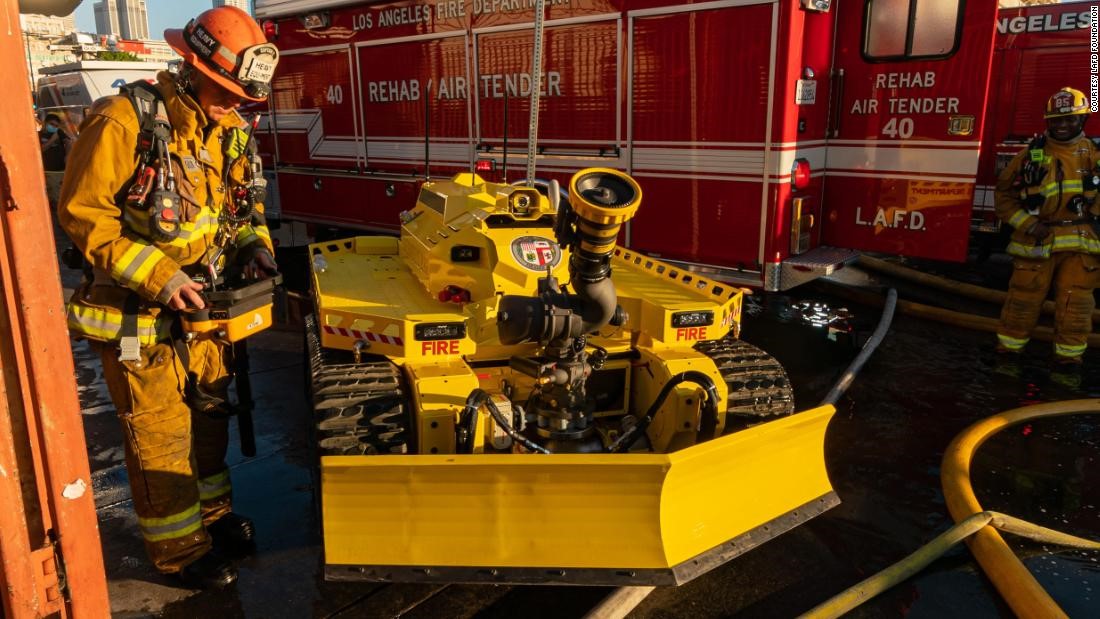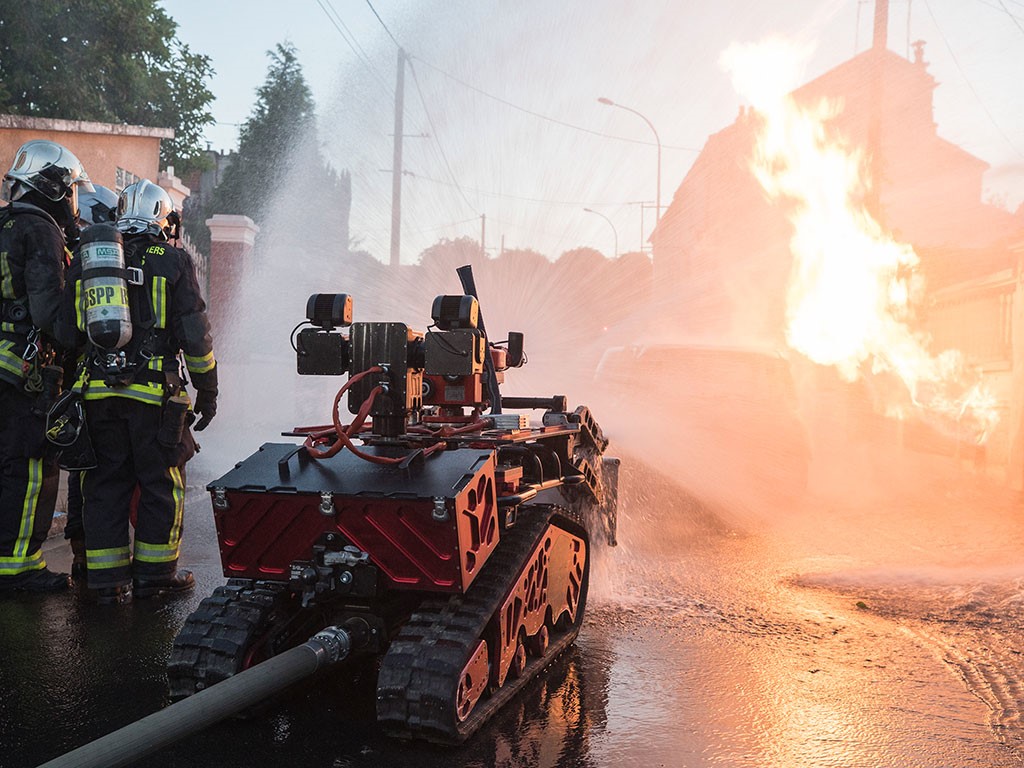With global warming, wildfires are becoming more frequent and intense. Current risk management systems are insufficiently equipped to cope with the increasing number of fires. In tackling blazes, firefighters are often confronted with collapsing structures, toxic smoke, and uneven steep grounds. In this context, new technologies such as AI-powered robots and drones have the great potential to revolutionize firefighting.
The AI for Good webinar “Fighting wildfires with intelligent robots” discusses how autonomous firefighting robots can assist in predicting and locating fires, collecting hazardous data as well as extinguishing flames.
“The target use case for intelligent robots and AI is diverse. From wildfires that threaten historical landmarks and communities around the world, it is the humans we most hope to protect,” said Kirk McKinzie, President at McKinzie Smart Technologies.
Multitude of possible applications of firefighting robots
Several different types of robots can be integrated into the firefighter’s mission. Shark Robotics is one company that has already designed six different robots. “Our goal is to intervene close to the danger to protect humans, their environments and the companies,” explains Manon Vermenouze, Director of Communications, Public Affairs, and CSR at Shark Robotics.
Their first robot, Colossus, “can transport equipment, […] evacuate wounded people […] and climb stairs”, says Manon. It was famously used at the Notre-Dame Cathedral Fire in April 2019. Its cameras and sensors “can be the eye and the arm of firefighters.”

Another robot, Fotokite, developed by Perspective Robotics AG, is an actively tethered drone “delivering mission critical information from a bird’s eye perspective,” described Bart Slager, CEO of Perspective Robotics AG.
“When firefighters arrive, they want to do two things at the same time: immediately come to action and keep an overview,” said Bart Slager, CEO at Perspective Robotics, “This can all be done by just pushing a start button.”
Having an autonomous drone like Fotokite allows firefighters to assess the situation quickly and effectively. In addition to this, the drone has a thermal video feature. “This will help them not only fight the fire more effectively but also reduce water consumption, […] contributing to a more sustainable operation.”
Developing trust in new technologies
Standing on the ground of a long tradition of firefighting, experienced firefighters can be hesitant to welcome new technology. However, “it’s not going to take the job of the firefighters; it’s going to enhance what they do,” says Kirk McKinzie.
At the World Economic Forum 2022, FireAId was initiated to “serve as a global node and a facilitator of networks of providers and users of data and AI solutions for wildfires”, said Arunima Sarkar, AI Lead, Centre for Fourth Industrial Revolution, WEF. She also explained how new types of data forms can supplement existing forms to create more complex models for predicting wildfires: “We are seeing rapid advances in artificial intelligence and machine learning models that can be trained using these different new data sources.” In their approach, they “create multistakeholder communities, share feedback about how these approaches have worked, aggregate these learnings and scale them to other regions.”
The first pilot of FireAId started during the worst wildfire season in Turkey. With that a dynamic wildfire risk map and resource allocation were developed that can now be used in other regions as well.
 AI technology used in real-life firefighting missions
AI technology used in real-life firefighting missions
Assistant Chief firefighter Wade White gave insight into how firefighters are already implementing advanced technology into their work. “The robot Colossus was the inspiration for us to head in this direction with the Los Angeles City Department,” said Wade. After the purchase of Colossus, the Los Angeles City Fire Department (LAFD) uses it up to two times a week.
Within the last couple of years, the LAFD “developed and implemented a drone program, integrated the RS3 firefighting robot and […] also purchased an electric fire engine which goes in line with the Sustainable Development Goals”. During the Getty Fire, the Department used WIFIRE “to plan our evacuation routes and figure out what types of values are at risks or homes that are in the path of the fire,” Wade continued. “Once getting the information out to the community, we use NotifyLA to […] give early warning and also notifications in regards to paths of evacuation.” They are currently evaluating the Fotokite as an option as well.
The AI for Good webinar emphasized the symbiotic collaboration of firefighters with various AI-powered technologies. The advantages of integrating robotics into a traditional profession like firefighting are clear, but the possibilities are not yet exhausted.
To learn more about AI and firefighting, watch the full webinar below.
Follow AI for Good to stay informed about the latest developments in AI and robotics.














